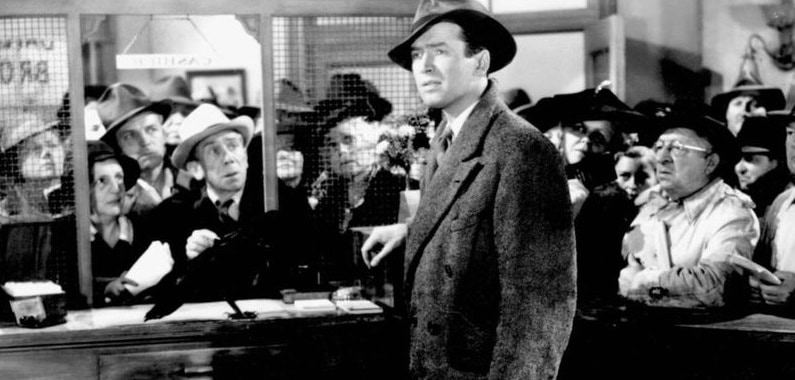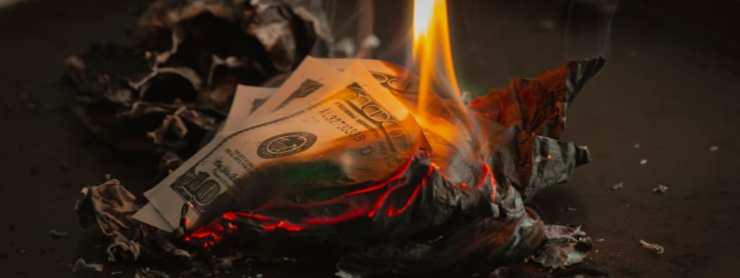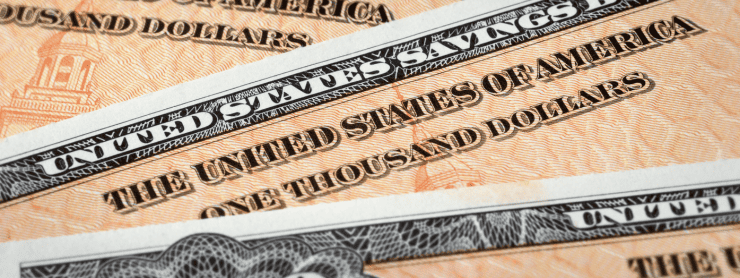Spring of 2023 brought yet another financial crisis. The largest collapse since the Great Recession has been met with anger, apathy, and a lot of confusion. When combined, three failed banks — Silicon Valley and Signature Banks in March, and First Republic Bank in May — with more than $520 billion in assets, were larger than the 25 banks that went down in 2008. This left many wondering: what was the problem and was this just the beginning? While there is significant overlap in their situations, for this article we will focus on just one institution. Silicon Valley Bank (SVB) made its home in the venture capital capital of the world. Their niche meant clientele leaned towards the ultra-rich and the startups they were financing. The bank claimed that among them were close to half the nation’s venture-backed startups in health care and technology. Not to stretch your heartstrings too tightly, but the poor things had no choice but to keep well in excess of the $250,000 arbitrarily guaranteed by the FDIC in their accounts, to the tune of 90% of their deposits being uninsured. SVB was not too big to fail, but the depositors were too rich to face the loss.
The United States’ system is somewhat unique in the number of smaller institutions it allows. Brian Romanchuk said on Macro N Cheese that this crisis was forcing him to rewrite parts of his upcoming book, and explained:
“It’s gonna be haphazard. Some small banks might be brilliantly run, other ones are just amateur hour… It grew rapidly, which is always a problem, but it was focused, as the name suggests, on venture capital… they were very specialized in that industry and so they did loans that are unusual. So, it’s an unusual business.”
A so-called medium-sized bank with over 200 billion dollars in assets, these “amateurs” have successfully lobbied for looser regulations than the big banks face, arguing that they pose less systemic risk. Some have said SVB was a bit too cozy or too trusting with its customers. One of the bank’s employees said of customers after the collapse: “They’ve been getting the red-carpet, silver-platter treatment at SVB. Whether you’ve raised $5 million or you’ve raised $500 million, you have a dedicated person.” As the run unfolded, SVB president Greg Becker channeled his inner George Bailey and implored those affected to “stay calm” and support the bank that had supported them for four decades. Whether reckless or willful, Becker’s role in this plot is not so much victim as villain. Just days before the announcement of the $1.8 billion loss that sparked panic, a trust he owns dumped $3.6 million in SVB stock.
Although in existence since 1983, SVB’s portfolio roughly tripled in size between 2020 and 2022. In 2021 the Motley Fool ran a headline reading “This Bank is a True Growth Stock,” and issued a “rare ‘all in’ buy alert.” The Fool pointed out that “Every time the Federal Reserve raises its Fed funds rate by 0.25%, SVB will realize an additional $110 million in net interest income.” This half-truth ignores that every time the Fed raised rates, it was lowering the resale value of SVB’s long term, held-to-maturity, securities. Also in 2021, fatally, the bank began a 600% increase in its holdings of these very securities. The bank’s officers, chasing bigger bonuses, had bet the farm and lost. Or put another way, quoting Michael Hudson, “Ponzi schemes work until somebody wants to withdraw their money.”
A bank’s ledger has liabilities on one side and assets on the other. Depositors’ accounts, money the bank has promised to make available, are a liability. Customers can move their balances to other institutions at any point (which SVB’s did), and the bank had better have enough liquid assets available to transfer (which SVB did not). Bank assets are the notes on loans they have made (promises of future payments from customer to bank), investments (e.g., stocks and securities), and their holdings of central bank debt (an insignificant amount of cash and a significant digital balance of reserves).
Readers will recall that back in 2008, the infamous great recession was caused by fraudulent activity under the “notes on the loans” section of bank assets. The banks had intentionally inflated the assessed value of properties, engaged in abusive and deceitful sales practices, and committed outright forgery; then they packaged these loans together and sold them as a product called mortgage-backed securities. Turns out, securities are not always secure.
SVB had invested in U.S. Treasury securities, called Treasurys, when the interest rate was low and the price was high. Come March of 2023, however, the Federal Reserve was announcing its 9th consecutive rate hike since March of 2022. Bonds bought today receive a much higher interest rate than do the bonds sold before rates rocketed. That means if one wants or needs to sell old bonds, they will have to reduce the price to reflect the additional interest the buyer could earn by purchasing the new bond instead. Imagine buying a ten-year $100 bond that pays one dollar per year, but then rates rise to four dollars per year. Last year’s bond pays $10 and this year’s pays $40 over their lifetimes. To sell the old bond one must subtract the difference in income from the $100 face value, so that the buyer can make up the lost interest when the bond reaches maturity. The more rapidly the interest rate climbs the less these outstanding assets are worth.
Our third asset, after loans and investments, is the bank’s Federal Reserve balance. The Federal Reserve is the United States’ central bank, the bank’s bank, where more than 5,000 private institutions, the US Treasury, and foreign governments keep accounts for interbank settlement. When one bank pays another, this most liquid of assets is the predominant tool. And pay each other they sure did — to the tune of 42 billion dollars of deposits moved out of SVB in a single day! The bank became illiquid and was taken over by the FDIC. It was an old-fashioned bank run in the new high-speed world of fintech. SVB is caught in the spotlight but they are far from alone in hiding the risk created by current unrealized losses. They got stuck with too much of a shrinking asset, fixed-rate Treasurys, and not enough of the slowest growing but least volatile asset, their floating-rate Federal Reserve account. Oops.
“But that doesn’t earn very much money. That would be the safest option. If they’d done that, there’d be no problem … They bought a bunch of these bonds because they had a higher interest rate on them, but then the Fed went nuts and started hiking rates like mad and the short rates are actually higher than the yield on those bonds and the value of those bonds plummeted because if the yield goes up, the price of a bond goes down.”
– Romanchuk
Post 2008, QE, quantitative easing, meant the Federal Reserve was buying existing Treasurys and mortgage-backed securities from the banks by creating new reserves. This expands the size of the Federal Reserve’s balance sheet but is just a swap of asset types for private banks. The interest rate was near zero, but the price of bonds and other assets was being kept very high, because even these low returns would still earn more than the interest on reserves and the Fed’s “open market operations” were driving down supply. Since 2018, QT, quantitative tightening has meant that the Federal Reserve is shrinking its balance sheet. The offloading of the bonds purchased during QE increases their supply and puts downward pressure on their price. Combined with the Fed’s sudden raising of interest rates this past year it created a one-two punch.
SVB tried to sell equity or take on new debt, but it was too late. Then they tried to sell the bank but again no luck. The sale of Treasurys at an enormous loss was blood in the air, and signaled to society’s vultures and hyenas that their uninsured deposits were at risk. Birdbrains took to tweeting and flocking around and the rest is history. As the FDIC stepped in and took over the bank, it was decided that the uninsured depositors would be bailed out. This is, after all, the class that enjoys such benefits. At the same time the Federal Reserve announced measures to address systemic danger.
One has to wonder about SVB, though. Right up until the crisis, the President and CEO of the now infamous bank was also serving on the Board of Directors at the Federal Reserve Bank of San Francisco. Could he really have been so inept at managing the risk caused by the Federal Reserve’s targeted interest rate changes? Or if it could happen to SVB, who could be next?
As Stephanie Kelton and L. Randall Wray explained in a coauthored piece “One year ago, the FOMC still expected interest rates to be in the 2% range for 2023 with inflation in the 2-3% range. Holding long maturity treasury bonds and mortgage-backed securities still seemed safe. Why waste money hedging interest rate risk? The Fed wasn’t even bothering to stress-test bank portfolios for losses due to rising interest rates.” Hedging means placing contrary bets, shrinking wins to avoid catastrophic losses. SVB should have been doing it, and regulators should have been checking their work. However, even if they had been stress tested, banks are not expected to withstand a run in the first place. After 2018 a bipartisan loosening of regulations exempted banks smaller than $250 billion from this largely performative action.
As Bill Black puts it:
“Fannie, Freddie, Lehman Brothers, Bear Stearns, AIG, the big three Iceland Banks and a host of others, they all passed stress tests with flying colors just before they crashed and burned. Stress tests don’t check whether you can survive a run, which is the thing that typically kills you quickest, at least. Right? So that’s kind of a big gap. And maybe it was intentional because the stress tests were designed as propaganda to say, look, we’ve made the bank so much safer.”
Experts such as Bill Black and Warren Mosler have pointed out that even if the regulations themselves were strong, we would still face the problem of deliberately weak enforcement. Black explains: “I always emphasize the three D’s: deregulation, desupervision, and de facto decriminalization. And it’s the second two that are the biggest problem, as opposed to deregulation.” In Mosler’s view this problem arises from rules that chase what is not allowed instead of narrowly defining what is allowed. He states: “This whole idea of having a book, you know, 18,000 pages long on what you can’t do rather than just telling you what you can do on one page isn’t my idea of how to run the banking system.” This arrangement creates a game of financial schemer whack-a-mole, and the public are the perpetual losers.
Gimmicky – but legal – bank accounting allows the counting of these government securities at their held-to-maturity value even if that figure is far from accurate for current resale, hiding what are called “unrealized losses” (or gains). It is only if the bank is forced to sell that the loss is “realized” in the bank’s books. Was the run really over? What was the risk of contagion to other banks that had also bet big on now-devaluing Treasurys? Here the SVB plot gets more than 300 billion dollars thicker. To stifle any spread, the Fed used emergency powers to buy this massive sum of securities back from the banks at their original values instead of at the current destroyed values. Unlike the private banks, there is nothing to stop the Fed from holding the unrealized loss until these Treasurys mature, or from selling them and absorbing the reduction in income which they remit to the Treasury in the first place.
The obvious solution the Fed will not be pursuing is lowering its interest rate window. In fact, under the guise of controlling inflation, more increases remain likely. The government can create a third of a trillion dollars bailing out unprotected elites that got caught in a crossfire, but what it cannot “afford” to do is loosen the screws that impale the working people. SVB was collateral damage in a larger war of elite versus poor.
Instead of proven effective strategies such as price controls or policies to boost supply, we have inflation placed under the misguided purview of Federal Reserve monetary policy. As if performing some sick Jedi mind trick, ostensible experts wave their hands and state that we will reverse a bout of inflation which left workers poorer by intentionally making workers even poorer.
Inflation has winners and losers – if a dollar of goods is broken down we may end up with, for simplicity, 25 cents for labor, 50 cents for other expenses, and 25 cents profit. When prices rise, will you be better or worse off? Roughly 6 out of 10 Americans do not even have $500 in savings, meaning that it is a mistake for most to worry about existing wealth instead of future wealth. Being better or worse will depend on the percentages. If prices double so instead of one dollar something costs two dollars and the percentages stay the same, giving us 50, 100, and 50 cents, then workers are basically where they were originally, the same hours of labor will buy the same amount of real goods and services. If our final percentages change to 20, 50 and 30 then wage earners are worse off and can buy less with an hour’s work. If instead we have 30, 50, and 20 then wage earners are better off and an hour buys them more. This pandemic-induced bout of inflation has seen percentage gains in the profit category far outpace the labor category, meaning working people are worse off, and that our pitiful wage gains are not what is driving the inflation.
High interest rates make borrowing money more expensive and lending money more lucrative. They increase the flow of money from poor to rich, and from government to rich. While rising rates are supposed to alleviate inflation by increasing the cost of private credit, they simultaneously have contradictory effects. First, businesses that borrow face higher costs and pass them on to consumers whenever possible. Second, this past year’s increase in government interest payments (enormous unearned income that overwhelmingly benefits the wealthy) has been credited by Warren Mosler and others with keeping the United States economy out of recession (so far) by shifting free lunch from poor school kids back to Wall Street. Mosler calls it “universal basic income for those who already have money.” These high rates are a regressive, trickle down, asset-inflating method to actively and intentionally reshape the economy for the worse.
Of course, today’s monetary policy is tomorrow’s fiscal policy, and rising rates mean that interest payments are forecast to overtake even our obscene level of military spending. Being such a large part of the budget means the interest payments themselves increase the size of the debt and therefore of future interest payments. We are pretending to address non-asset inflation through the deliberate strategy of increasing inequality.
Steven Grumbine asked of Thomas Fazi on Macro N Cheese:
“It’s time for us to really talk about these people as murderers, killers, unfit for society…
“Every time there’s gains at the bottom, they claw it back through some form of austerity, through interest rate hikes, decreasing deficits, balanced budgets, everything you’ve said. Do you agree that these people amount to murderers or do you think they’re just good misguided people?”
Fazi:
“No, they know perfectly well what they’re doing. They understand how the system works very well. So, in that sense, what you’re saying is completely true. I think they are, on some level, sociopaths. There are people that are literally engaging in what Engels called social murder. If you kill one person, you go to jail for life.
“But if you deliberately decide to cut back health spending, which causes the death of tens of thousands of people, you’re just a politician doing what the market demands. Even though I think they know perfectly well what they can and can’t do. I think this to me is very clear. And so, yes, they are engaging in social murder because these policies really make the difference between life or death for hundreds of thousands, millions, billions of people on a global level.
“And I think much of the suffering is completely unnecessary. It is entirely the result of policies that are aimed at maintaining and ensuring that a tiny elite continues to basically hold the rest of society at ransom. And I think this is what interests elites more than anything else, even more than profits. It’s about power that comes before anything else.”
American business magnate, raging antisemite, and nazi sympathizer Henry Ford once remarked, “It is well enough that people of the nation do not understand our banking and monetary system, for if they did, I believe there would be a revolution before tomorrow morning.”
While some envision transforming banking into a more mutually beneficial public-private partnership, others seek the nationalization of the industry. Michael Hudson says: “The problem is just beginning, it’s just beginning because the problem that the finance sector and the banking sector has today is endemic to finance capitalism.” The financial sector’s product is volatile private debt, prone to default and criminality. Debt has interest. Given an interest rate and a period of time, $100 will become $200. Next, the same interest and the same interval of time as the last will grow $200 to $400, then from $400 to $800. The interest rate and the interval of time stay the same but the amount of money added keeps doubling. This is an exponential growth curve. The business model of the FIRE sector and the real world are not compatible. What else in the real world grows exponentially forever? Nothing at all.
However, forever is exactly what they are after. As Radhika Desai says, “when you can’t have banking as a public utility then inevitably what happens is government becomes a private utility.” The government has been dumping money into the FIRE sector’s assets without deleting the corresponding liabilities across the ledger. Using public spending to bail out flailing financial schemes has avoided economic collapse at the cost of allowing a higher and higher starting point for FIRE after each crisis. Their assets are our debts, and instead of writing down our debt to neutralize toxic assets, governments have taken to rescuing the overvalued assets while leaving our debt to climb higher and higher. Hudson says we need a debt jubilee to strip FIRE’s growing debt overhead from the economy or we face catastrophe. If the gamblers have their way the only other thing to grow exponentially forever will be inequality.
So, who is responsible for this fiasco? Or for the last one? Or the next? Any reasonable person can see that the present system is untenable. Experts — former small bank owner Mosler, quantitative analyst Romanchuk, regulator and whistleblower Black, academics from Kelton and Wray to Hudson and Desai — place different weights on what they agree was the group of catalysts, as well as on what they see as the most prudent solutions. Was it a bank for its negligence? Regulators for their absence? Uninsured depositors for their panic or prior lack of diligence? The revolving-door Fed for faking such egregious ignorance? A whole sector that rewards criminality? Eliminate any one of these failings and this crisis may have been avoided. Allow any such foolishness and it will surely happen again.






Your conclusion, in the last paragraph, is 100% correct. What happened with SVB, Signature, and First Republic will happen with other banks. What the FDIC and Fed did, of making whole those Silicon Valley companies with uninsured deposits of $50 million or more, is corporate welfare. It is immoral. All banks will now be assessed higher insurance premiums, which get passed on to depositors everywhere as higher fees and lower savings and CD rates. These depositors are the shrinking middle class and working poor, not the 0.01%. We are being forced, like in 2008, to bail out the ultrawealthy again!
Next, a few things for you to consider.
1. Nixon imposed price controls; they didn’t work.
2. Much as I dislike Henry Ford too, he priced his autos so that they were affordable for the workers who made them. (No one even thinks like that now.) Also, Ford was the last holdout in the fight against shareholder primacy for corporations. I wish he won, instead of the Delaware Chancery Court.
3. It is good Powell is raising rates. He told banks he would; SVB should have started hedging its interest rate risk in March 2022! Also, as you wrote, we need to have more than $500 in savings. 10+ years of 0% real interest rates has been a disaster for worker savings. The Fed suppressed rates for too long. Yellen should have slowly raised them as Fed gov; she kept them low for the benefit of VC and Wall Street. (Yellen is also the former president of SVB’s regulator, the San Francisco Fed Reserve. I am not a fan!)
Bill Black is a wise man. I’m glad you mentioned him, as that is rare now.